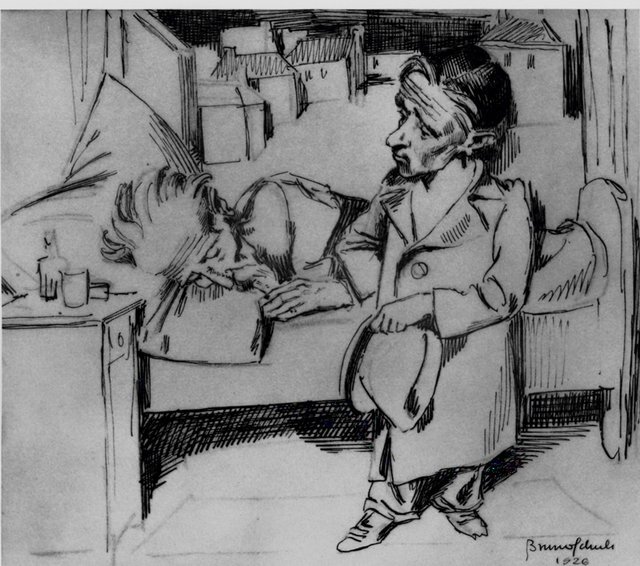What do you think?
Rate this book


384 pages, Hardcover
First published January 1, 1933
The Demiurge has had no monopoly of creation, for creation is the privilege of all spirits. Matter has been given infinite fertility, inexhaustible vitality, and, at the same time, a seductive power of temptation which invites us to create as well. In the depth of matter, indistinct smiles are shaped, tensions build up, attempts at form appear. The whole of matter pulsates with infinite possibilities that send dull shivers through it. Waiting for the life-giving breath of the spirit, it is endlessly in motion. It entices us with a thousand sweet, soft, round shapes which it blindly dreams up within itself.
On that map, made in the style of baroque panoramas, the area of the Street of Crocodiles shone with the empty whiteness that usually marks polar regions or unexplored countries of which almost nothing is known. The lines of only a few streets were marked in black and their names given in simple, unadorned lettering, different from the noble script of the other captions. The cartographer must have been loath to include that district in the city and his reservations found expression in the typographical treatment.






‚Äú‚Ķthese primitive forms were unremarkable compared with the richness of shapes and the splendour of the pseudofauna and pseudoflora, which sometimes appeared in certain strictly defined environments, such as old apartments saturated with the emanations of numerous existences and events; used-up atmospheres, rich in the specific ingredients of human dreams; rubbish heaps abounding in the humus of memories, of nostalgia, and of sterile boredom. On such soil, this pseudovegetation sprouted abundantly yet ephemerally, brought forth short-lived generations which flourished suddenly and splendidly, only to wilt and perish.‚Ä�The pathos is increased infinitely when one knows his fate as a Jew in Galicia - shot as less than vermin by an eminently disrespectful SS officer.



When Bruno Schulz's stories were reissued in Poland in 1957, translated into French and German, and acclaimed everywhere by a new generation of readers to whom he was unknown, attempts were made to place his oeuvre in the mainstream of Polish literature, to find affinities, derivations, to explain him in terms of one literary theory or another. The task is well nigh impossible. He was a solitary man, living apart, filled with his dreams, with memories of his childhood, with an intense, formidable inner life, a painter's imagination, a sensuality and responsiveness to physical stimuli which most probably could find satisfaction only in artistic creation ‚Ä� a volcano, smoldering silently in the isolation of a sleepy provincial town.
After tidying up, Adela would plunge the rooms into semidarkness by drawing down the linen blinds. All colors immediately fell an octave lower, the room filled with shadows, as if it had sunk to the bottom of the sea and the light was reflected in mirrors of green water ‚Ä� and the heat of the day began to breathe on the blinds as they stirred slightly in their daydreams. [...] Everyone in this golden day wore that grimace of heat ‚Ä� as if the sun had forced his worshipers to wear identical masks of gold.
Perhaps the city and the marketplace had ceased to exist, and the gale and the night had surrounded our house with dark stage props and some machinery to imitate the howling, whistling and groaning... We were increasingly inclined to think that the gale was only an invention of the night, a poor representation on a confined stage of the tragic immensity, the cosmic homelessness and loneliness of the wind.